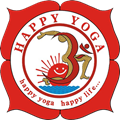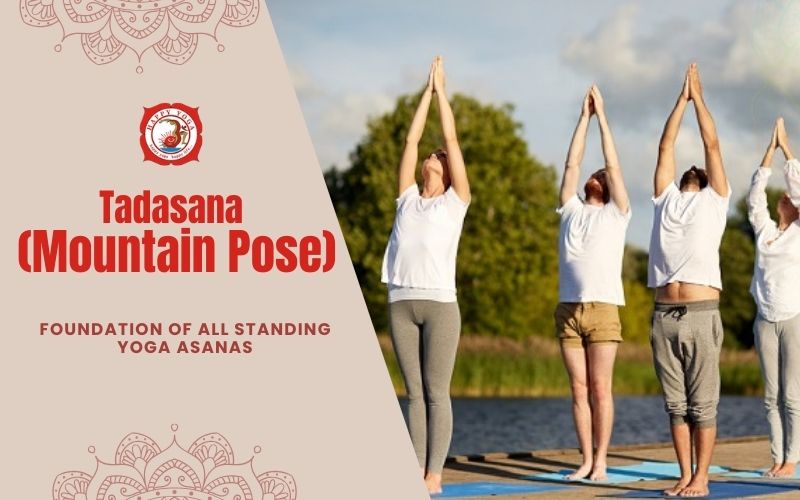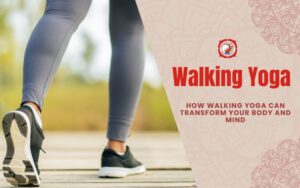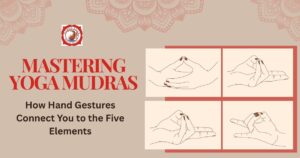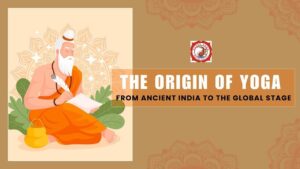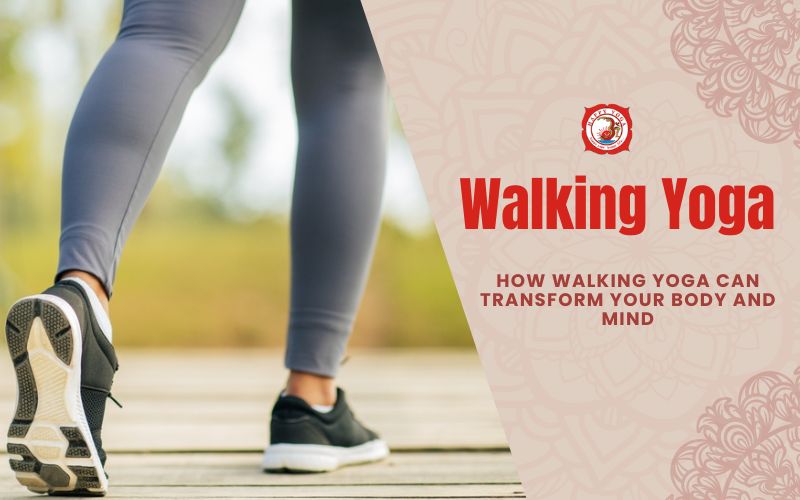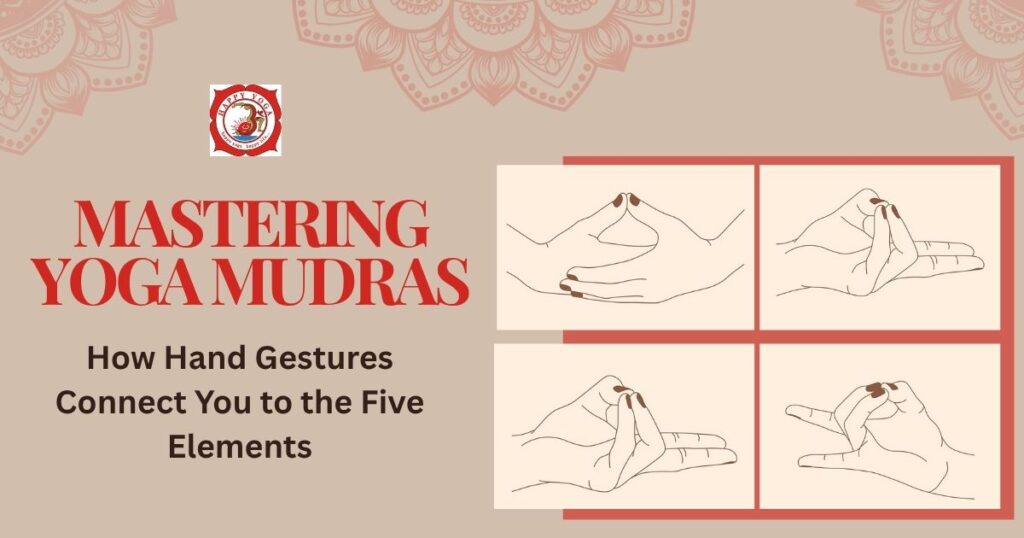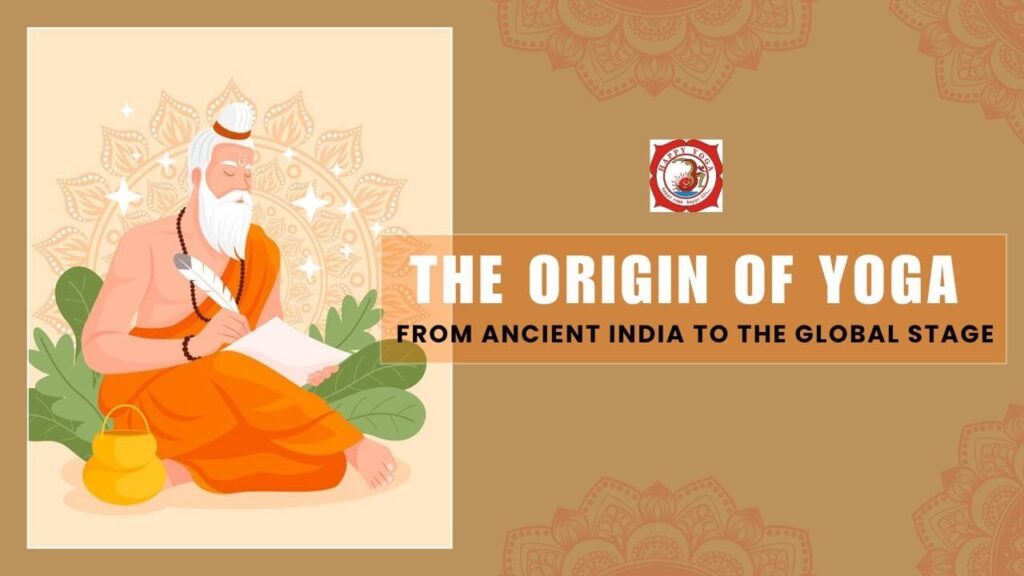Mountain Pose: Why Good Posture Starts with Tadasana
Have you ever noticed how we rarely pay attention to how we stand? Most of us complain about our necks or backs after sitting at a desk all day, or leaning to one side for extended periods while standing. Many people have bad posture and they don’t even realise it all day. But what if standing correctly can help you feel better balanced, calmer, and more confident?
You can understand the importance of standing correctly through Tadasana (Mountain Pose). Although Tadasana is standing still, it is much more than just standing still. Tadasana, also known as the Mindful Tadasana, is a foundational yoga pose that helps you cultivate a tall posture, breathe deeply, and connect with your body. Tadasana is a foundation for many other yoga postures, and it creates better posture, balance, and awareness.
In this blog, we will discuss what happens in tadasana, the benefits of mountain pose, who should not practice tadasana, and how you can start adding this pose to your daily practice routine, even if you don’t consider yourself a yogi. Standing tall may seem simple, but it gives your body and mind something big to work with.

What is Tadasana or Mountain Pose?
Tadasana is called Mountain Pose because, in Sanskrit (the language of yoga), “Tada” means “mountain” and “Asana” means “pose.” This pose allows your body to mimic the solid stillness and strength of a tall and steady mountain from the ground to the sky, in a lengthening way.
While it may appear like you are just standing, there is a lot more involved in Tadasana. You will learn to stand in a new way with awareness by engaging your legs, lifting your spine, and opening your chest, all while remaining relaxed and alert. The regular practice of this asana enables a deeper connection to your body, breath, and posture.
Tadasana is used as a base pose in many yoga flows or sequences, such as Surya Namaskar (Sun Salutation). Tadasana is often the first and last pose in a flow, reminding us to stay steady and mindful from start to finish.
Tadasana is not only an integral part of your yoga practice, but you can also use it to make a mindful check-in throughout the day. Even if you are not engaged in a full yoga practice, Tadasana can help you bring back your focus, calm, and awareness on and off the mat!

How to Perform Tadasana: Step-by-Step Guide
Tadasana may appear simple in nature, but the real complexity of this pose lies in the precision required. Practising Tadasana in an accurate way develops body awareness, allowing you to create a better sense of alignment.
- Begin Tadasana with your feet together or slightly apart, about hip distance apart, for a more stable balance.
- Just like the Standing Yoga Posture, press evenly into both feet, including the ball of the foot, the heel of the foot, and the outer edge of the foot.
- Activate the quadriceps without locking the knees.
- Exhale! Lift the chest only slightly away from the hips, roll the shoulders onto the back body, and down.
- Lengthen the spine upward toward the sky and feel the head extending upward, creating space.
- Engage the core and slightly tuck the tailbone under.
- Your arms should hang to the sides of your body, palms facing forward.
- Keep your chin parallel to the ground and soften your face.
- You can close your eyes or leave a gentle gaze a few feet ahead.
- Begin to breathe through your nose, introducing awareness of your body.
Tadasana Benefits: Why This Pose Matters
Tadasana, or Mountain Pose, typically seems simple but offers a variety of physical and mental benefits. Here’s how this asana enhances overall well-being.
1. Improves Posture
Of all the tadasana benefits, its value with posture may be the most important. Most individuals develop slouched or imbalanced posture by sitting too much, or from long-term phone use, without realising it. Tadasana can re-teach the body to stand up tall with balanced alignment.
2. Enhances Balance and Stability
Mountain pose trains muscles to share weight evenly, ultimately improving muscular stability and spatial awareness, which is necessary to perform other yoga poses safely.
3. Strengthens Lower Body
Mountain pose activates and strengthens the thighs, knees, calves, ankles, and the arches of your feet, and can tone leg muscles gently but effectively when practised regularly.
4. Supports Spinal Health
When aligned properly, Tadasana lengthens the spine, decreasing spinal compression and improving circulation and nerve function throughout the back.
5. Boosts Energy and Awareness
Tadasana works to refresh your mind and body, fortunately. By intentionally breathing while practising Tadasana, you will increase the flow of oxygen to your body and promote clarity of mind.
6. Builds Core Strength
Engaging your pelvic and abdominal muscles requires you to utilise your core during Tadasana, ultimately toning the core and increasing control of your bodily movements.
7. Encourages Mindfulness
As this pose requires internal comfort and subtle tweaks, these factors promote a greater sense of mindfulness & body awareness, eventually connecting your breath, body, and mind.
Mountain Pose Benefits for Mental Well-being
Beyond the physical benefits, the mountain pose is grounding and soothing to the mind and body. Practising Tadasana promotes:
- Reduces mild stress and anxiety.
- Promotes deep breathing and calms the nervous system.
- Enhances concentration and mental discipline.
- Creates inner quiet and stability in a rapidly changing environment.
Standing tall and focusing on your breath allows the mind to settle and the body to find its centre.

Who Can Practice Tadasana?
Tadasana pose is suitable for nearly everyone, from the inexperienced yoga practitioner to the athlete to older practitioners. It is an excellent introduction to yoga for individuals who lead sedentary lifestyles, as well as for those experiencing mild discomfort related to their posture.
Tadasana is also helpful for:
- Office workers spend long hours sitting at their desks.
- Students learning the basics of alignment.
- Yoga teachers building awareness in beginner-level students.
- Elderly people who are seeking low-impact but effective movement options.
Contraindications of Tadasana
Although Tadasana is generally safe and beginner-friendly, in some situations you may want to use caution. Being aware of the contraindications of Tadasana will enable safer practice.
Avoid or Modify If:
- You have low blood pressure and feel dizzy or lightheaded when standing still.
- You suffer from significant balance disturbances, or vertigo (consider using wall support).
- You are in early pregnancy—make sure you are not overusing or engaging your abdominal muscles.
- You are fatigued or weak, especially if you are post-surgery or post-illness (be supervised while practising).
If you are still unsure about your own condition, consult with a certified yoga teacher or a health professional.

Tadasana Variations and Modifications
Since people interact with movement using different levels of strength, flexibility and experience, Tadasana can be expressed in many variations:
1. Urdhva Hastasana (Tadasana with Arms Raised)
When arms are lifted overhead and stretched upward, the elongation of the spine is reinforced, and breath awareness deepens.
2. Wall-Assisted Tadasana
Practising Tadasana with your back against a wall is a way to establish proper alignment with the appreciative support of the wall; this is especially helpful for beginners or for people healing from injury.
3. Chair Supported Tadasana
For seniors, or for people with reduced mobility, sitting tall on a chair simulates Tadasana with safe support. All variations offer a way to explore a new aspect of the practice while still aligning with the spirit of the pose.

Tadasana in Daily Life
The beauty of Tadasana lies in its adaptability. You don’t need a yoga mat or a studio to practice Tadasana. You can practice Tadasana while you are waiting to board a bus or train.
- You can practice Tadasana while cooking or brushing your teeth to start a connection to an engaged core.
- You can practice Tadasana between two sessions of work at your desk if you are feeling stressed or have body aches, and you want to reset your posture.
To practice in a more conscious way, Tadasana can be a good posture to practice mindful breathing and can be used as a way to reconnect in those more difficult moments of the day when you need time to ground yourself.
Eventually, Tadasana can become a meditative, stabilising anchor throughout your day.
Tadasana’s Role in Yoga Sequences
Tadasana is a pose, but also a transition pose (which is used in many iterations and in many different configurations) within flow sequences of yoga (Ashtanga and Vinyasa). Tadasana can be the:
1. Beginning point of a Sun Salutation.
2. Resting posture between standing poses.
3. Reset Point to reorient body awareness through breath.
4. Base of postural fundamentals (strength, alignment, and breath-to-body modality).
The presence of Tadasana as a yoga sequence keeps it as one of the most versatile, commonly practised asanas in Hatha and Vinyasa.

Tadasana in Yoga Philosophy
In the ancient yogic scriptures of the Yoga Sutras from Patanjali, the principle of asana was to be ‘sthira sukham’, or ‘steady and comfortable’, and Tadasana is the essence of this concept; a solid foundation – a reminder that true strength is found in stillness, balance, and presence.
It also aligns with the concept of Pratyahara (withdrawal of senses), training you to direct your awareness inward. By standing still yet alert, you practice self-discipline, patience, and observation.
Why Learn Tadasana at a Yoga School in Rishikesh?
Rishikesh is known worldwide as the yoga city. When learning Tadasana at a yoga school, like Happy Yoga International, a certified yoga school, you receive more than just physical instruction. You learn the spiritual, traditional, and authentic roots of the practice.
As part of our yoga teacher training programs, we provide thorough instruction and practice on posture alignment, anatomical concepts, breath control, and yogic philosophy. Tadasana is one of the asanas we teach early in the programs, with substantial instruction that informs and lays the foundational principles of all the standing postures to come.
Conclusion: Tadasana Is More Than Standing
Mountain Pose (Tadasana) seems simple, but when practised with awareness, it can change your body and mind. It reminds us that even when there is stillness, we can see power, strength and clarity.
When we include Tadasana in our daily yoga practice, we are building a solid foundation for asanas and for life.
At Happy Yoga International, we help you build that strong foundation through every breath and pose.

200 Hour Yoga Teacher Training Rishikesh || 300 Hour Yoga Teacher Training Rishikesh || 500 Hour Yoga Teacher Training Rishikesh || Yoga Retreats in Rishikesh
Frequently Asked Questions
Question 1: What are the benefits of Tadasana?
Ans. Posture improvement, better balance, toned legs, spinal alignment, and mindfulness.
Question 2: How long should I hold Tadasana?
Ans. Begin with 30 seconds and add time from there up to 2 minutes.
Question 3: Can Tadasana be performed by beginners?
Ans. Yes, it is a great pose for beginners to learn body alignment.
Question 4: Does Tadasana have any contraindications?
Ans. If you have low blood pressure, balance problems, or fatigue, then avoid or modify it.
Question 5: Is Tadasana used in sun salutation?
Ans. Yes, it is the first and last pose in the Surya Namaskar sequences.
